Signalian
PDF THINK TANK: CONSULTANT

- Joined
- Aug 18, 2015
- Messages
- 10,608
- Reaction score
- 305
- Country
- Location
A report on wounded soldiers of Pakistan Army who lost their limbs while fighting War on Terror in FATA. Pakistan Army took special measures and equipped AFIRM for medical care and rehabilitation of these soldiers. Since then thousands of soldiers have been treated and rehabilitated.

On a hot afternoon in June, I set out from Hilal Magazine's office at General Headquarters (GHQ) and drove up to the Armed Forces Institute of Rehabilitation Medicine (AFIRM), located near Military Hospital (MH), Rawalpindi. I had been hearing much about contributions of this institute in helping very critical patients, some of whom had even lost both of their hands and legs, and bringing them back to normal life. Much was running through my mind as I entered the institute.
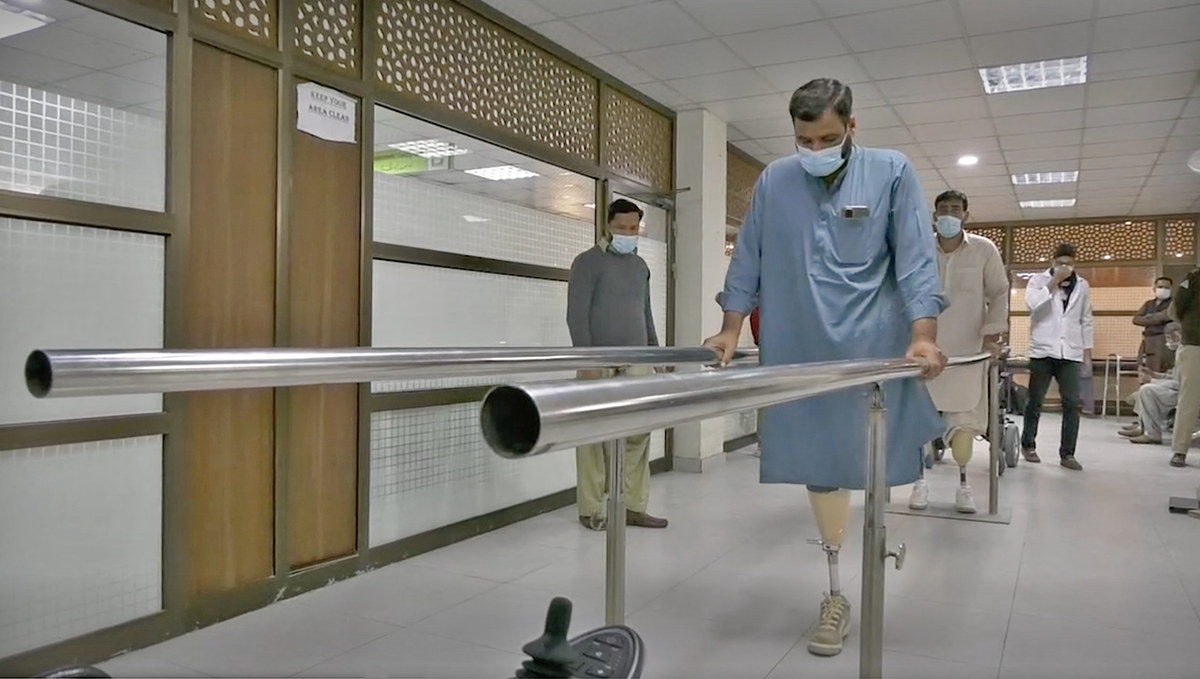
“In the beginning I couldn’t walk because of my amputated leg. I was fixed with an artificial limb by AFIRM. They made me do different exercises and now I think it’s my own leg, not artificial. There are days when I wake up and I feel my shoulder hurts, or my stumps are sore, but I just keep on pushing forward. Because when we are inducted in the Army, we are ready to take bullets,” shared Havildar Muhammad Jamal, who is admitted at AFIRM for the third time for prosthesis repair since the blast in Orakzai Agency in 2010, that resulted in the loss of his leg. He was given first aid and then rushed to Combined Military Hospital (CMH) Kohat where he was advised that amputation was the best course of action. From there, he was sent to AFIRM for further treatment that continues till date. "I never thought I could walk again but AFIRM did it and now I can walk well with my artificial limbs. They have not only healed my wounds but have also given me strength and hope to live again," said emotionally charged Jamal who is a paramedic himself. During his stay at AFIRM, he learnt computers and now he is serving in his unit and works in the medical branch on a computer along with his other paramedic duties. Without post-operative care and physiotherapy, he would have remained bed-ridden for the rest of his life.
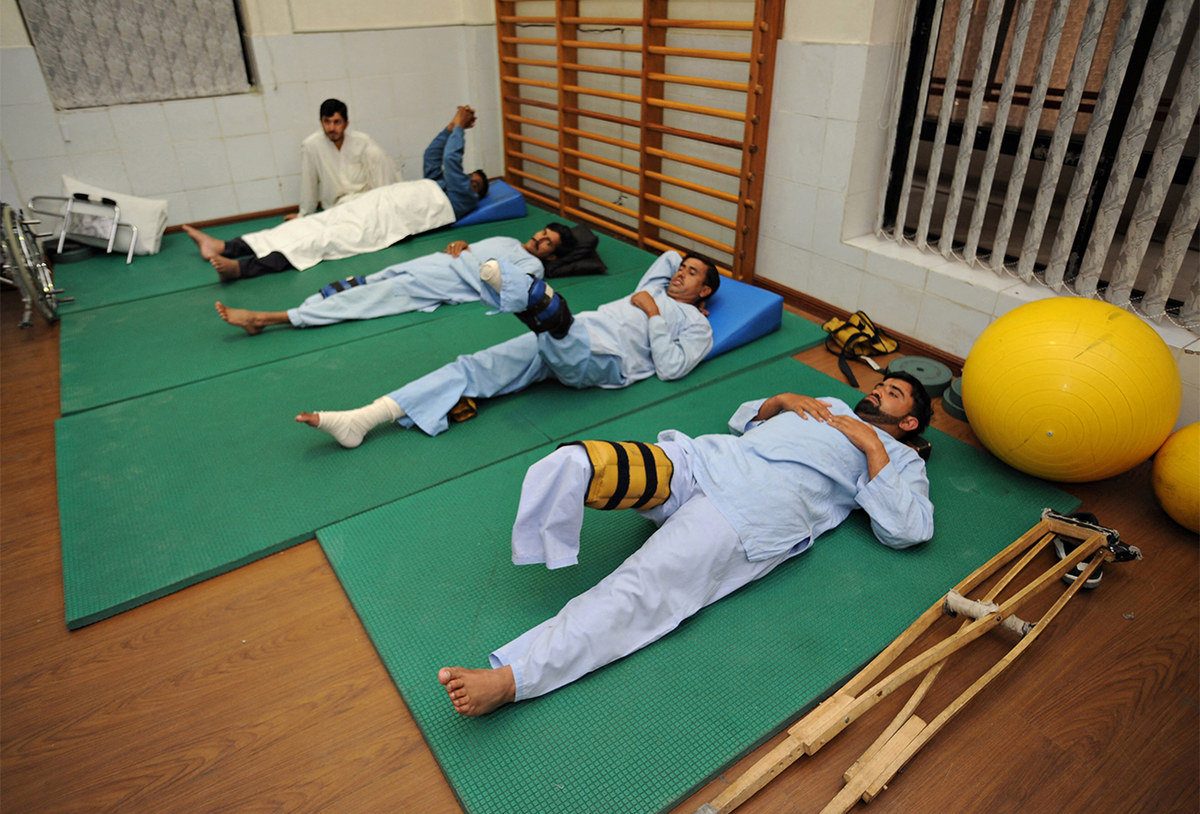
Established in 1980 and upgraded from time to time, AFIRM has looked after thousands of patients like Havildar Jamal. There is a chain of rehab departments that were established in quick succession within AFIRM: Artificial Limbs & Appliances Center set up in 2007 (upgraded in 2014); Department of Speech & Psychology set up in 2008; Occupational Therapy in 2009; Vocational Training in 2010; the Pain Clinic in 2011, and Sports Rehab in 2012. During 2005, an earthquake of 7.6 magnitude hit Pakistan and brought much destruction, injuring around 70,000 plus people in addition to almost the same number of deaths. Besides many other weaknesses, a wide gap in rehabilitation services was observed in dealing with the casualties. “Our hospitals weren’t ready to receive such mass casualties and War on Terror was yet another stimulus for the development of rehab spectrum services in Pakistan,” said Major General Tahir Mukhtar Sayed, Commandant of AFIRM. Accordingly improvements and developments were carried out and now complete treatment of such patients is done here at AFIRM. He further added, “The war-wounded patients constitute the bulk of our admitted clientele, around 65-70%. Then there are those with road traffic accidents, spinal injuries since we are the only centre which treats spinal trauma injuries to limbs or amputations. At times we get diabetes amputations, too.”

The institute has admission capacity of 100 beds and 90% are occupied most of the time. They have adequate resources and support in terms of finances and infrastructure. AFIRM is transforming lives of amputees by giving them mobility and the strength to endure this trial with dignity. Mushtaq, a war-wounded patient at AFIRM, is a triple amputee but is capable of performing various functions with his right myoelectric hand. “Not only are we acquiring bionic arms to put on patients but we are collaborating with Project Management Organization (PMO) and National University of Sciences and Technology (NUST) to do it in a cost effective way as it costs us about 2 million at present. We have also acquired the capacity to do the metallurgy work. In not too distant a future, we will be making it ourselves,” shared the Commandant.
Sometimes there are people who have lost both their legs and an arm and the challenge lie for AFIRM in preparing their muscles and grooming them psychologically, do the cosmetic work and then train them for changed capabilities. It is a challenge to deal with young patients having limb injuries and to bring them back to a stage where they can be retained in service in lines with the new policy.
On March 1, 2015, Havildar Pervez Khan was working with the Searching and Explosive Unit of Pakistan Army in Mir Ali, South Waziristan when a Rocket-Propelled Grenade hit him. In AFIRM, he was sitting before me with his back leaning against the hospital bed, his clothing on the right leg rolled up to reveal a stump below the knee, covered with bandage. “Harrowing pain shot through my body but I didn’t lose my consciousness when the rocket was fired. My fellow soldiers kept sitting with me and tried to comfort me as I was the only one who got injured. When I was flown to the hospital, not certain about my future as initial medical treatment indicated of serious injuries that could lead to amputation. And finally my foot was cut,” he narrated. But he was satisfied with the treatment that he was being provided at AFIRM. Pervez looked more determined with his eyes glowing as he shared further about his routine and life, "Gym is all the more important because when there’s no foot below one leg, the other one has to bear the entire weight. With vocational training we are given hope that we aren’t disabled. They give us guidelines to take care of ourselves; they make modifications at our home with the supporting components such as disable friendly washrooms, kitchen and dining areas. I see where I stand now. I am respected more than before and people greet me with so much love. They come to see me here, they come to my home. If I call one person from my regiment, 10 people would come rushing for help.”
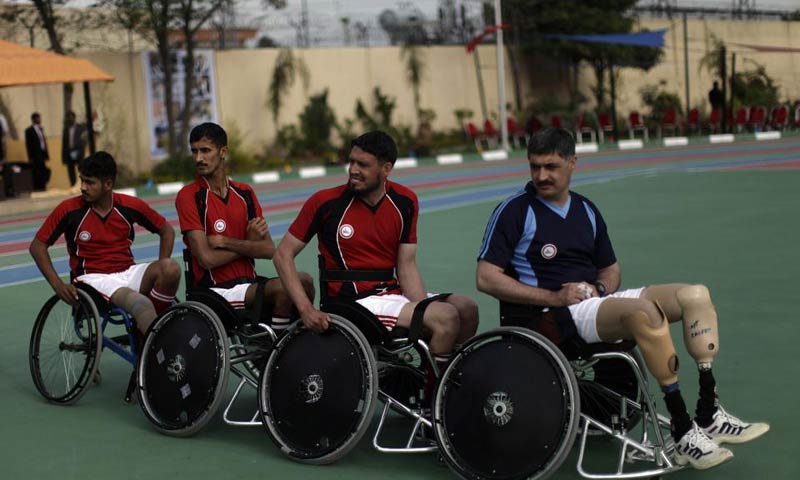
The institute is attending about 1200 patients per day and the success rate is quite high. “Because of the work load we have, there are teams coming from England, America, Switzerland and Turkey. They are very keen to collaborate with us because of the numbers we are dealing with. This war has created 37000 injured with limbs in Pakistan. Nobody else has that high a figure. British Army has just signed a working agreement with us so that they could send their teams in AFIRM to work with us. Similarly, American Army’s Walter Reed National Military Medical Centre has set up a huge collaborative programme with us,” Maj Gen Tahir shared with us.
Sepoy Muhammad Ibrahim from 3 Baloch Regiment was moving in a convoy in South Waziristan Agency when a blast had blown his left leg off. The damage was catastrophic. With no loss of time, he was flown in a helicopter to CMH, Rawalpindi. When he regained consciousness after an hour, he was told his leg wound was beyond treatment. It was a shock to regain consciousness after an hour and listen the news that the surgeons would cut the leg off above the knee. He was finally brought to AFIRM after the treatment. For around 6 months after the blast, he couldn’t get used to the idea of immobility and his stump. He was then fixed with an artificial leg and sent for home training. He’s at the Rehabilitation Medicine Centre for a month now. His family is supporting him however they could and they now have hope that he would be fit to walk again.
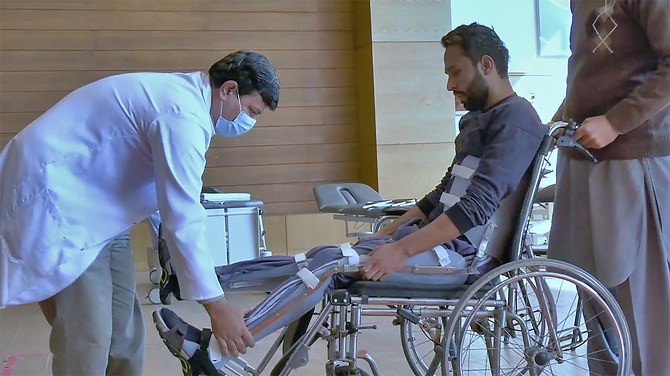
The institute instills hope into these patients that Pakistan Army and the society haven't abandoned them and uses whatever means are needed to support them. Stories of these soldiers’ lives speak of extraordinary courage and a continuous struggle to go on in life, not as a disabled patient but as a tax payer, a normal citizen who is not a burden on the society.
To walk and walk normally is the primal human urge. The management at AFIRM is thinking in terms of solutions, way beyond the problems that are many and immense. AFIRM is in the process of setting up a Gait Analysis Lab which would be the only laboratory of its kind in Pakistan. More so, to facilitate patients, a valet parking lot has also been arranged.
The organization is currently making about 400-450 prosthetic processes and over 10,000 orthotics. “This is also an area we want to develop further,” told Maj Gen Tahir Mukhtar Sayed. Not only treatment, but AFIRM is also doing capacity building to groom doctors (both uniformed and non-uniformed) who can carry out treatment of such patients across the country. Of the 38 rehabilitation specialists in Pakistan, 32 received their training at AFIRM which is an honour.
Naib Subedar Sadiq Hussain from 36 Azad Kashmir Regiment had his limb amputated after he stepped on an anti-personnel mine while he was on a search operation in South Waziristan. He’s at AFIRM since April 22, 2014. He was put through muscle strengthening training before being given an artificial leg. Now he is learning to walk with it. After the swelling is gone and the leg fits in, only then he would be able to walk comfortably. Although an amputee’s pain can be harrowing and difficult to deal with, he seems unfazed by a prosthetic leg attached to his body that helps him walk. “We are Muslims and have been inducted in the army to serve this country and nation, we can’t let our hope die. I am very happy the way my treatment is being done in this institution,” shared Sadiq Hussain. The feeling of pride hanged in the air of a ghazi who had just won a fight – the fight within.
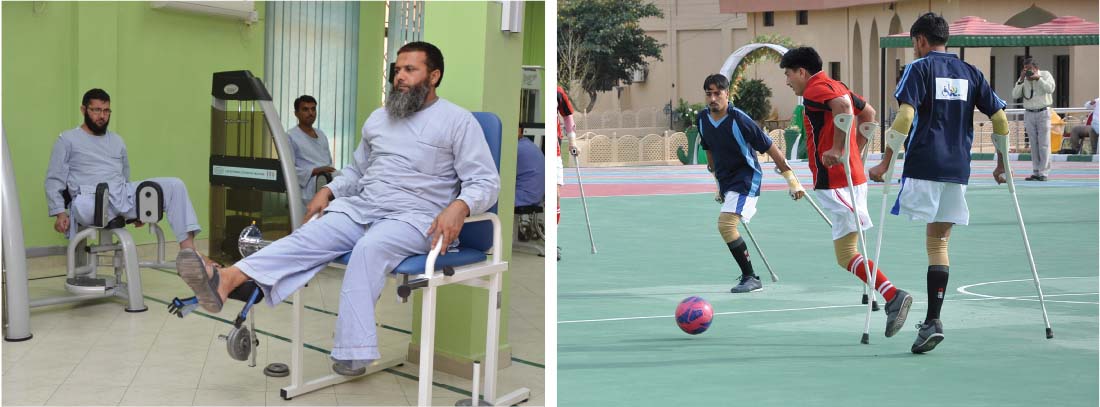
 www.hilal.gov.pk
www.hilal.gov.pk

On a hot afternoon in June, I set out from Hilal Magazine's office at General Headquarters (GHQ) and drove up to the Armed Forces Institute of Rehabilitation Medicine (AFIRM), located near Military Hospital (MH), Rawalpindi. I had been hearing much about contributions of this institute in helping very critical patients, some of whom had even lost both of their hands and legs, and bringing them back to normal life. Much was running through my mind as I entered the institute.

“In the beginning I couldn’t walk because of my amputated leg. I was fixed with an artificial limb by AFIRM. They made me do different exercises and now I think it’s my own leg, not artificial. There are days when I wake up and I feel my shoulder hurts, or my stumps are sore, but I just keep on pushing forward. Because when we are inducted in the Army, we are ready to take bullets,” shared Havildar Muhammad Jamal, who is admitted at AFIRM for the third time for prosthesis repair since the blast in Orakzai Agency in 2010, that resulted in the loss of his leg. He was given first aid and then rushed to Combined Military Hospital (CMH) Kohat where he was advised that amputation was the best course of action. From there, he was sent to AFIRM for further treatment that continues till date. "I never thought I could walk again but AFIRM did it and now I can walk well with my artificial limbs. They have not only healed my wounds but have also given me strength and hope to live again," said emotionally charged Jamal who is a paramedic himself. During his stay at AFIRM, he learnt computers and now he is serving in his unit and works in the medical branch on a computer along with his other paramedic duties. Without post-operative care and physiotherapy, he would have remained bed-ridden for the rest of his life.

Established in 1980 and upgraded from time to time, AFIRM has looked after thousands of patients like Havildar Jamal. There is a chain of rehab departments that were established in quick succession within AFIRM: Artificial Limbs & Appliances Center set up in 2007 (upgraded in 2014); Department of Speech & Psychology set up in 2008; Occupational Therapy in 2009; Vocational Training in 2010; the Pain Clinic in 2011, and Sports Rehab in 2012. During 2005, an earthquake of 7.6 magnitude hit Pakistan and brought much destruction, injuring around 70,000 plus people in addition to almost the same number of deaths. Besides many other weaknesses, a wide gap in rehabilitation services was observed in dealing with the casualties. “Our hospitals weren’t ready to receive such mass casualties and War on Terror was yet another stimulus for the development of rehab spectrum services in Pakistan,” said Major General Tahir Mukhtar Sayed, Commandant of AFIRM. Accordingly improvements and developments were carried out and now complete treatment of such patients is done here at AFIRM. He further added, “The war-wounded patients constitute the bulk of our admitted clientele, around 65-70%. Then there are those with road traffic accidents, spinal injuries since we are the only centre which treats spinal trauma injuries to limbs or amputations. At times we get diabetes amputations, too.”

The institute has admission capacity of 100 beds and 90% are occupied most of the time. They have adequate resources and support in terms of finances and infrastructure. AFIRM is transforming lives of amputees by giving them mobility and the strength to endure this trial with dignity. Mushtaq, a war-wounded patient at AFIRM, is a triple amputee but is capable of performing various functions with his right myoelectric hand. “Not only are we acquiring bionic arms to put on patients but we are collaborating with Project Management Organization (PMO) and National University of Sciences and Technology (NUST) to do it in a cost effective way as it costs us about 2 million at present. We have also acquired the capacity to do the metallurgy work. In not too distant a future, we will be making it ourselves,” shared the Commandant.
Sometimes there are people who have lost both their legs and an arm and the challenge lie for AFIRM in preparing their muscles and grooming them psychologically, do the cosmetic work and then train them for changed capabilities. It is a challenge to deal with young patients having limb injuries and to bring them back to a stage where they can be retained in service in lines with the new policy.
On March 1, 2015, Havildar Pervez Khan was working with the Searching and Explosive Unit of Pakistan Army in Mir Ali, South Waziristan when a Rocket-Propelled Grenade hit him. In AFIRM, he was sitting before me with his back leaning against the hospital bed, his clothing on the right leg rolled up to reveal a stump below the knee, covered with bandage. “Harrowing pain shot through my body but I didn’t lose my consciousness when the rocket was fired. My fellow soldiers kept sitting with me and tried to comfort me as I was the only one who got injured. When I was flown to the hospital, not certain about my future as initial medical treatment indicated of serious injuries that could lead to amputation. And finally my foot was cut,” he narrated. But he was satisfied with the treatment that he was being provided at AFIRM. Pervez looked more determined with his eyes glowing as he shared further about his routine and life, "Gym is all the more important because when there’s no foot below one leg, the other one has to bear the entire weight. With vocational training we are given hope that we aren’t disabled. They give us guidelines to take care of ourselves; they make modifications at our home with the supporting components such as disable friendly washrooms, kitchen and dining areas. I see where I stand now. I am respected more than before and people greet me with so much love. They come to see me here, they come to my home. If I call one person from my regiment, 10 people would come rushing for help.”

The institute is attending about 1200 patients per day and the success rate is quite high. “Because of the work load we have, there are teams coming from England, America, Switzerland and Turkey. They are very keen to collaborate with us because of the numbers we are dealing with. This war has created 37000 injured with limbs in Pakistan. Nobody else has that high a figure. British Army has just signed a working agreement with us so that they could send their teams in AFIRM to work with us. Similarly, American Army’s Walter Reed National Military Medical Centre has set up a huge collaborative programme with us,” Maj Gen Tahir shared with us.
Sepoy Muhammad Ibrahim from 3 Baloch Regiment was moving in a convoy in South Waziristan Agency when a blast had blown his left leg off. The damage was catastrophic. With no loss of time, he was flown in a helicopter to CMH, Rawalpindi. When he regained consciousness after an hour, he was told his leg wound was beyond treatment. It was a shock to regain consciousness after an hour and listen the news that the surgeons would cut the leg off above the knee. He was finally brought to AFIRM after the treatment. For around 6 months after the blast, he couldn’t get used to the idea of immobility and his stump. He was then fixed with an artificial leg and sent for home training. He’s at the Rehabilitation Medicine Centre for a month now. His family is supporting him however they could and they now have hope that he would be fit to walk again.

The institute instills hope into these patients that Pakistan Army and the society haven't abandoned them and uses whatever means are needed to support them. Stories of these soldiers’ lives speak of extraordinary courage and a continuous struggle to go on in life, not as a disabled patient but as a tax payer, a normal citizen who is not a burden on the society.
To walk and walk normally is the primal human urge. The management at AFIRM is thinking in terms of solutions, way beyond the problems that are many and immense. AFIRM is in the process of setting up a Gait Analysis Lab which would be the only laboratory of its kind in Pakistan. More so, to facilitate patients, a valet parking lot has also been arranged.
The organization is currently making about 400-450 prosthetic processes and over 10,000 orthotics. “This is also an area we want to develop further,” told Maj Gen Tahir Mukhtar Sayed. Not only treatment, but AFIRM is also doing capacity building to groom doctors (both uniformed and non-uniformed) who can carry out treatment of such patients across the country. Of the 38 rehabilitation specialists in Pakistan, 32 received their training at AFIRM which is an honour.
Naib Subedar Sadiq Hussain from 36 Azad Kashmir Regiment had his limb amputated after he stepped on an anti-personnel mine while he was on a search operation in South Waziristan. He’s at AFIRM since April 22, 2014. He was put through muscle strengthening training before being given an artificial leg. Now he is learning to walk with it. After the swelling is gone and the leg fits in, only then he would be able to walk comfortably. Although an amputee’s pain can be harrowing and difficult to deal with, he seems unfazed by a prosthetic leg attached to his body that helps him walk. “We are Muslims and have been inducted in the army to serve this country and nation, we can’t let our hope die. I am very happy the way my treatment is being done in this institution,” shared Sadiq Hussain. The feeling of pride hanged in the air of a ghazi who had just won a fight – the fight within.

Not Left Alone: Never Abandoned
A report on wounded soldiers of Pakistan Army who lost their limbs while fighting War on Terror in FATA. Pakistan Army took special measures and equipped AFIRM for medical care and rehabilitation of these soldiers. Since then thousands of soldiers have been treated and rehabilitated. On a hot...




